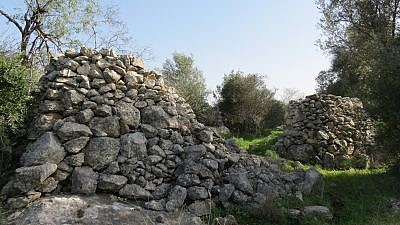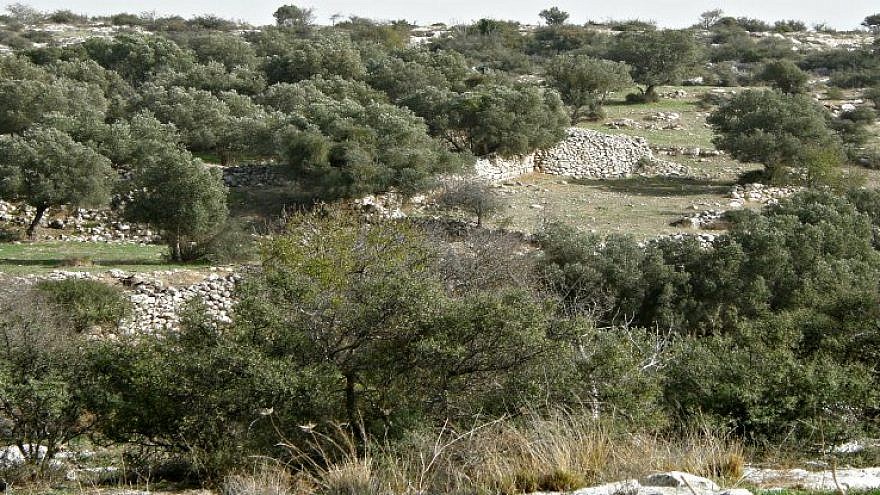In the town of Modi’in, which is situated between Jerusalem and Tel Aviv, lies Givat Sher (“The hill of Sher”).
At the base of the hill to the east are the remains of Um-el-Umdan, one of the oldest synagogue’s discovered in Israel.
The site itself is located on the top of the hill. It is defined by a surrounding wall made up of dry stone construction & encloses an area of approximately 24,000 square meters (24 dunams).

Within the confines of the walls are 4 watchtowers interspersed amongst 9 winepresses and numerous cairns. The cairns are made up of felt stones that are meticulously placed on outcrops of bedrock. To date, this is the only place in Israel where these structures have been found.
The question that begs to be asked is why and when were these cairns constructed? There is no agreed upon answer to these questions.
One theory is that the cairns are related to the 9 winepresses that are scattered throughout the site. The abundance of wine presses is an indication that numerous vineyards existed in the area.
Referring to the book of Isiah (chapter 5: verse 2), “And he fenced it, gathered out the stones thereof & planted it with the choicest vine and built a tower in the midst of it & also made a winepress therein: and he looked that it should bring forth grapes, and it brought forth wild grapes”.
According to present day surveys conducted in Hebron, there are 3 methods of grape cultivation:
1.Gefen Surchat – These are grapes grown on the ground and have a yield of +/- 500 kg/dunam.
2.Gefen Mudalit – These are grapes cultivated on vines & have a yield of +/- 1500/dunam.
3.Gefen Aderet – These are grapes cultivated on pergola type structures and have a yield from 3000 to 7000 kg/dunam.
The hypothesis is that the stone cairns were used to support the grape vines in the same way as does a pergola. In this manner grape production is radically increased.

The masses of cairns, coupled with 4 watchtowers hint of a scale associated with the authority of the time, implying royalty. In addition, 2 coins from the reign of Alexander Yannai, king and high priest during the Hasmonean period (167 B.C.E. – 63 B.C.E) were found on site. It would be a reasonable to assume that Herod (37 BCE–4 BCE) continued using the site, however as yet, no artifacts from the Herodian period have been found .
Furthermore, a site known as Beit Bud situated close to Givat Sher was home to an industrial sized olive press and a mikveh. The combination of mikveh and oil press implies oil for temple use only. Unfortunately, contractors building Buchman (a present day suburb of Modi’in) destroyed the olive press before a court order could be issued to prevent its destruction.
The massive scale and unique makeup of Givat Sher. Its location on 2 ancient highways to Jerusalem (known today as road 1 & road 443) and the adjacent synagogue and olive oil production plant of Bet Bud are, in my opinion, more than a minor hint of its past importance.
All these factors combined indicate that Givat Sher was a very prominent site at the very least and a royal winery at best.
____________________
Ron Traub is a certified Israeli tour guide and can be reached by email at rrdg
You can find more in depth articles on Israel and the Middle East @ en.mida.org.il


























